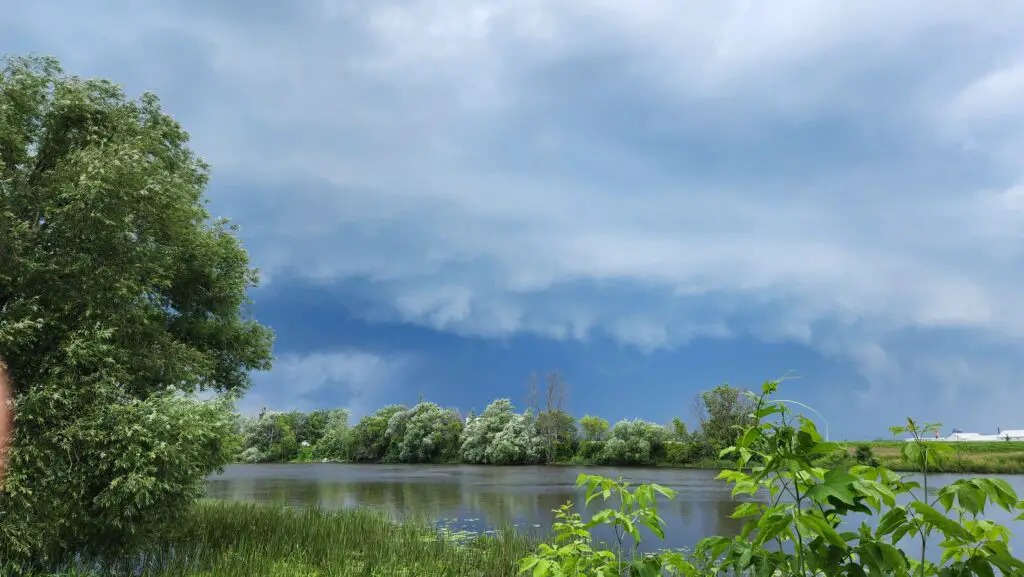Fishing for smallmouth bass in summer can be an exciting and rewarding experience for fishing enthusiasts.
Small streams and large rivers often support excellent populations of smallmouth bass.
These places require extra effort to access, which usually translates into relatively light fishing pressure, so more fish for you!
In this article, we'll share with you some important tips and strategies for summer smallmouth bass fishing.
If you'd like to learn more about smallmouth bass in general, see our complete guide. The guide will provide you with all the important and practical information you need to improve your fishing.
Article content
1. Early morning fishing
On clear, stable summer nights, river valleys often fill with fog, forming a temporary shield that protects the water from the sun's scorching rays. That's why it's best to be on the water at dawn.
Smallmouth bass feed actively in the early hours of the morning, taking advantage of low light and the attenuating effect of fog.
It is therefore advisable to get up early to take advantage of this fishing season.
2. Fishing on rainy days

Some of the most productive times for fishing for smallmouth bass in summer are rainy days, when the water stays low and clear.
If you fish under these conditions, pond junctions are often very productive.
These areas, known as tail-out zones, are transitional zones where the basin flattens out before emptying into a fast-flowing current.
Smallmouth bass use these areas during twilight feeding periods. But on rainy days, they can stay there all day.
Both hard and soft jerkbaits can be effective in attracting smallmouth bass attacks.

Example of tail-out: https://www.sierra.com)
3. Adapt to water flow variations
River fish must adapt to changes in water flow, and so must smallmouth bass anglers in summer.
During rainy or high-water conditions, spinnerbaits, soft lures swimmers and noisemakers are effective in attracting smallmouth bass.
When the water is low, clear and warmbass can be found far from shore. In such conditions, jerkbaits and crayfish imitations can be fruitful techniques.
4. Smallmouth bass behaviour in summer
Smallmouth bass tend to inhabit rocky shoreline areas in depths of 3 to 8 feet, such as points and shallow reefs.
As summer progresses, the larger smallmouth bass move to deeper water and reefs off the shore. (10-15+ feet deep)
Aquatic weed zones play a crucial role in the success of smallmouth bass fishing in summer.
Large areas of grass and small clumps both attract fish.
5. Search techniques
The use of lake maps, GPS plotters and depth sounders can help identify potential structures and locate areas where bass are found.
Areas with a combination of rocky structures and grassy areas, or areas where the grass diminishes between 13 and 15 feet in depth, can be productive locations.
We recommend saving the points of interest for future fishing trips. Bass have a very good chance of finding them again.
6. Grass fishing techniques
Different presentations can attract herb-loving smallmouth bass.
Spinnerbaits, lip-less noisemakers and lures like the LiveTarget Golden Shiner Rattle Bait are effective in large weedbeds or areas with 6 to 12 inches of water above the vegetation.

Slow-dropping lures, such as tubes and Senko lures, are ideal for isolated weeds.
More tips!
To increase your chances of success when fishing for smallmouth bass in warm weather, you can adopt different strategies.
- First of all, choose areas with currentbecause fish like moving water.
- Fishing in the shade is also advisable, as fish often seek out the sun. shaded areas to protect yourself from the sun.
- Using earthworms as bait can be effective in attracting fish.
- Another technique is to fish quickly to trigger reflex attacks. In hot weather, fish can react instinctively to lures that swim past quickly.
- Feel free to explore deeper zoneswhere the water is generally cooler. Fish can congregate there for a bit of freshness.
- Night fishing can also be fruitful, especially after warm sunny days and in the presence of a full moon. Fish are often more active at night, and the moonlight makes it easier to see them.
- Concentrate also on shallow banks, where fish are looking for a place to swim. shelter from the heat (under trees or on quaysides).
By following these tips and adapting to changing conditions, anglers can improve their chances of catching smallmouth bass during the summer months.
Enjoy your time on the water and don't forget to follow the safety rules.
Happy fishing!

